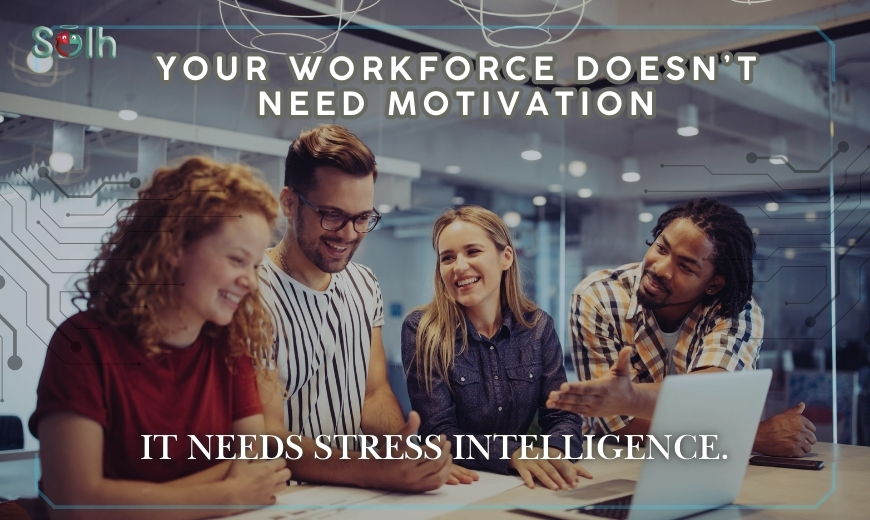I haven't used a meditation app in three years. Not because I'm anti-wellness, quite the opposite. I've just figured out something that most of Silicon Valley is still missing. The entire stress management industry is solving the wrong problem.
The Great Stress Relief Illusion
Walk into any corporate wellness program and you'll find the same tired playbook: breathing exercises for panic attacks, mindfulness sessions for overwhelm, and enough lavender-scented solutions to stock a small pharmacy. These aren't bad things, they're just incomplete things.
I've watched incredibly talented people become professional stress-relief seekers, jumping from technique to technique like they're collecting Pokemon cards. The result? They get really good at managing symptoms but never address the underlying capacity issue. It's like having a world-class pit crew for a car that can't handle the track.
The Resilience Arbitrage
While everyone else is focused on stress reduction, I'm focused on stress capacity. It's a subtle but crucial difference that creates what I call "resilience arbitrage", the competitive advantage that comes from thriving in conditions that drain others.
Resilience isn't about feeling less stressed. It's about expanding your operating range. Think of it like this: most people are optimized for 70-degree weather. I'm building systems that perform beautifully in everything from arctic conditions to desert heat. When the business climate gets uncomfortable, I'm just getting started.
The Neuroplasticity Edge
Here's where it gets interesting from a neuroscience perspective. Every time we practice resilience-building activities, we're literally rewiring our brains for enhanced performance under pressure. It's not metaphorical, it's measurable.
The traditional stress relief approach creates temporary states of calm. The resilience approach creates permanent improvements in how our neural networks process challenges. One is a consumable; the other is an investment in cognitive infrastructure.
My Four-Pillar Framework
Cognitive Flexibility: I've trained myself to find multiple solutions to every problem. When Plan A hits a wall, I don't stress, I activate Plans B through Z. This isn't optimism; it's strategic thinking under pressure.
Emotional Bandwidth: Instead of suppressing difficult emotions, I've learned to increase my capacity to experience them without being overwhelmed. Anger becomes data, fear becomes focus, and disappointment becomes strategic intelligence.
Controlled Exposure: Here's my contrarian take, I deliberately seek manageable challenges. Cold exposure, difficult conversations, ambitious deadlines. I'm essentially cross-training my stress response system.
Physical Foundation: Peak mental performance requires peak physical condition. This isn't about vanity; it's about creating the biological foundation for sustained high performance.
The Hormesis Principle
The concept that fascinates me most is hormesis—the idea that small doses of stress actually strengthen our capacity to handle larger challenges. It's counterintuitive, which is probably why most people miss it.
While others are trying to eliminate all discomfort from their lives, I'm strategically incorporating it. Those 5 AM workouts aren't punishment, they're training for the days when everything goes wrong at once. The difficult client meetings aren't obstacles, they're opportunities to expand my tolerance for complexity.
Building Anti-Fragile Organizations
Individual resilience is powerful. Organizational anti-fragility is transformative. I don't just want people who can handle stress, I want teams that get stronger from it.
We've shifted from crisis management to crisis utilization. Every challenge becomes a training opportunity. Every setback becomes strategic intelligence. Every pressure point becomes a chance to discover new capabilities we didn't know we had.
The Technology Multiplier
I'm not anti-technology, I'm pro-intentional technology. The apps and tools I use don't just help me feel better in the moment; they help me become better over time. They track progress, not just symptoms. They celebrate growth, not just comfort.
The difference between stress relief technology and resilience-building technology is the difference between pain medication and physical therapy. One provides temporary relief; the other creates lasting improvement.
The 2025 Paradigm Shift
We're at an inflection point. The organizations that will thrive in the next decade aren't the ones with the best stress management programs; they're the ones with the highest stress capacity. They're not optimized for comfort; they're optimized for performance under pressure.
This shift requires a fundamental reframe: stress isn't the enemy of performance—our limited capacity to handle it is. By expanding that capacity, we don't just survive challenges; we use them as fuel for growth.
Why Solh Wellness Gets It Right
In Solh Wellness, you won’t just get stress relief tips, but also complete solutions to your stress management problems. With the help of the next age A.I. configurations, you will be able to map your entire stress chart and find ways to mitigate the recursions of your thought processes. You can even mould your mind in such a way that your default positioning can change according to your will. And instead of cringing or depressing away from the thought of stress, you attack it head on and reach the flow state that allows you get on top of your game without any hindrances.
Ready to move beyond stress management to stress mastery? Solh Wellness offers the resilience-building tools that are creating the next generation of high performers. Don't just manage your stress, expand your capacity to handle it.
Let’s Connect!


